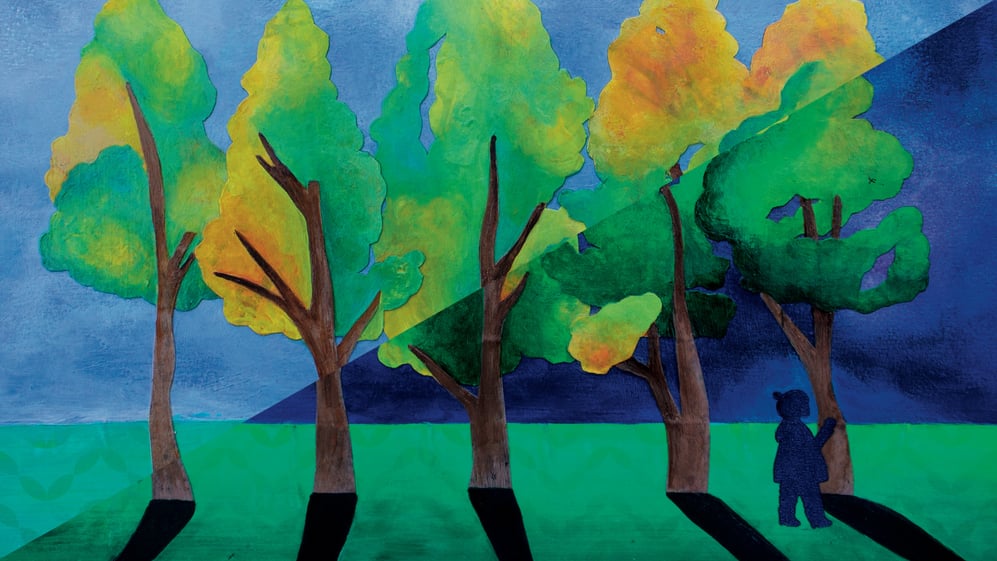One of the very first concepts we teach children is contrasting. We show them the difference between right and wrong, quiet and loud, day and night, fast and slow.
Contrasting is learned throughout a child's life and into adulthood—it sets the stage for being able to think critically, discern differences, and make decisions. Learning to spot differences between simple concepts and objects at a young age sets them up to be able to discern differences between problems and solutions, as well as to make informed decisions.
Teaching contrasts isn't limited to the classroom or long car rides. You can combine it with Bible stories, so children are learning to contrast items while actively thinking about Scripture, not just reading it. Here are five examples of Bible stories that can be used to teach contrasting at home, in the classroom, or at Sunday School or VBS.
Creation Story (Genesis 1:3–4, 14–19)
The creation story is a visual way to represent contrasts in the world. For young children, focus on the verses listed above; they're the most visually representative. But for older children, read the entire account (Genesis 1:1–27) and have them identify differences between land and sea, fish and bird, God and man.
Questions to ask
- What is the difference between night and day?
- What is different between the sun and the moon?
Things to do
- Go outside during the day and at night. Talk about what feels, looks, and smells different between the two.
- Make a list of things you like about the day and the night.
- Draw pictures that show what's different between day and night.
David and Goliath (1 Samuel 17:4–7, 42)
Many children love the story of David and Goliath because it's larger than life—and because David is young, so children can understand how he felt facing something large and scary! As you read the story, point out the descriptions of Goliath and David. (Goliath's height, traditionally, is nine feet, six inches tall, and his armor alone weighed over 120 pounds!)
Questions to ask
- Who is the tallest person you know? What can they reach or do that you can't? What can you do that they can't?
- How do you think David felt fighting such a big person when he was so much smaller?
Things to do
- Trace your child's body on a sidewalk. Then draw a body that is nine feet, six inches tall next to it to represent Goliath.
(If it's too cold or you don't have a sidewalk available, draw a picture on paper to compare the height, using inches instead of feet as your measurements, making Goliath nine inches tall.) - Make a list of things that scare you and things that make you feel safe. Remind your child that God is always with us and fights for us.
The Beatitudes (Matthew 5:1–12)
The Beatitudes are unlikely combinations of characteristics and blessings—uncommon rewards attributed to unexpected people, all as a gift for those in Christ. For younger children, words and concepts might need to be explained in more detail (e.g., "What does it mean to be meek?").
Questions to ask
- What are some ways that Jesus gives us the opposite of what we deserve?
- How can we show love to people by giving them the opposite of what we feel like we should?
Things to do
- Have one person act out the description of the blessed person in the Beatitudes, and have another person show what will happen to them. (One person acts out "poor in spirit." Another person acts out "for theirs is the kingdom of heaven.")
- Write out the descriptions of those who are blessed on slips of paper. Then write out the "for they shall" statements. Keep them in separate piles, and try to match them up to memorize the verses.
Mary and Martha (Luke 10:38–42)
The story of Mary and Martha is often used to impart the importance of putting Jesus first in our lives and receiving His free gifts to us. This application is crucial, so be sure to talk about that with your child as well. But you can also use this as an opportunity to talk about the contrasts between doing the same things at different times. (Like laughing—good when you're playing with your friend, but bad when it's the middle of praying in church.)
Questions to ask
- What are some differences between Mary and Martha in this story?
- When are some times you do good things at the wrong time?
Things to do
- Write your own short story or play that mirrors the story of Mary and Martha, except with something you would do on a normal day. Act it out with a friend or sibling!
The Houses on Sand and Rock (Luke 6:46–49)
For active and energetic youngsters, this parable of contrasts naturally leads to fun, hands-on activities! Be sure to talk about the life applications of this when you compare the two foundations—what would life look like without Jesus?
Questions to ask
- What is the foundation where you live made of? What would happen if it was made of sand?
- What makes rock sturdier than sand? What are the differences between the two?
Things to do
- Build two houses out of Legos. Then build two foundations—one out of other Legos or bricks, and the other out of sand or dirt—and place them outside or in a large container. Place the houses on top of your foundations, and then make it rain using a watering can or hose. See which foundation stays solid!
- For older kids, do some scientific research on why rocks hold up better than sand. For younger kids, have them touch sand and rocks and talk about the differences.
Niko's Night and Day teaches children contrasts in God's creation!















